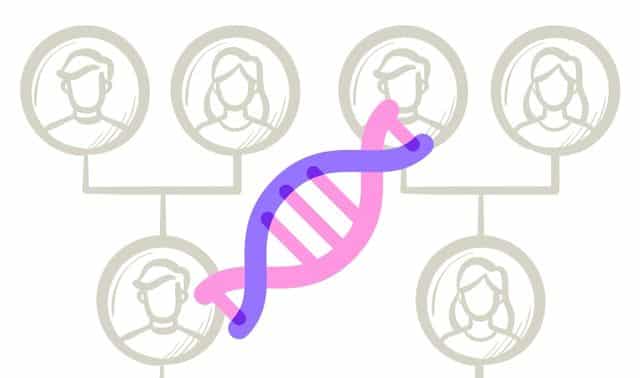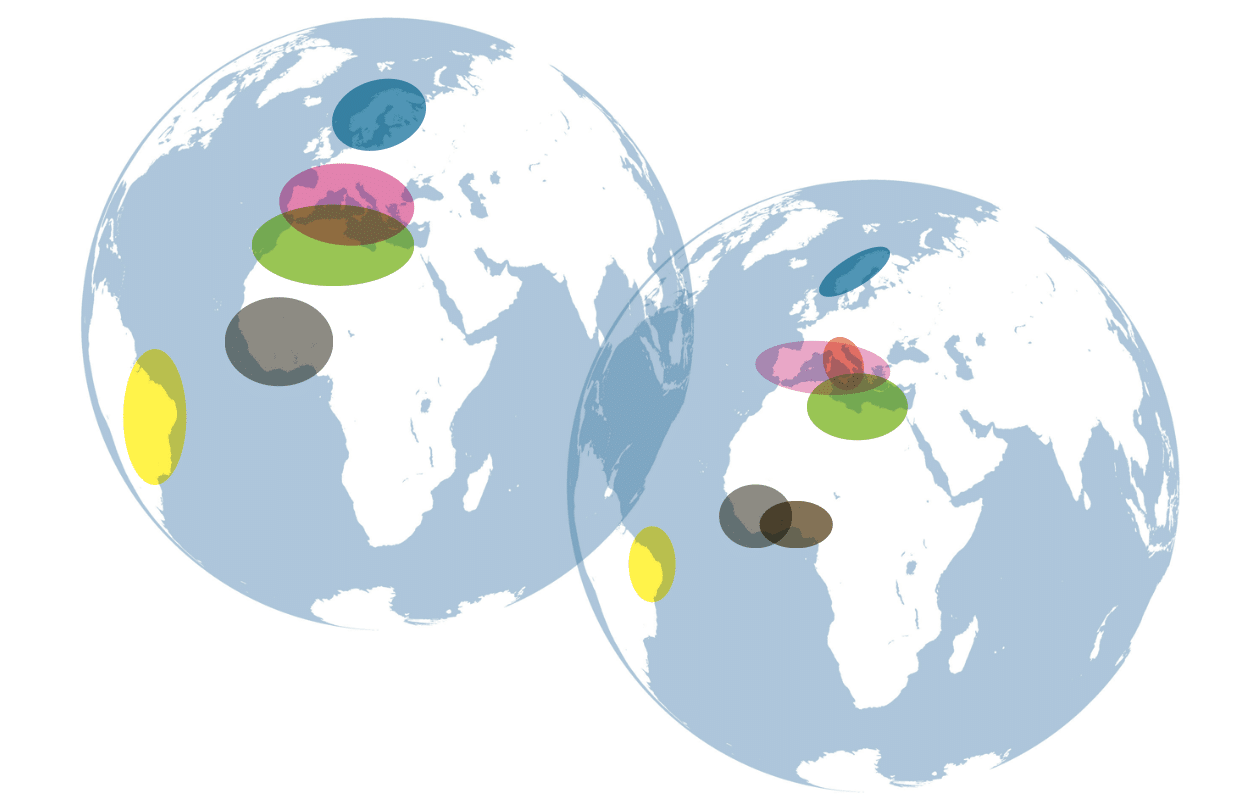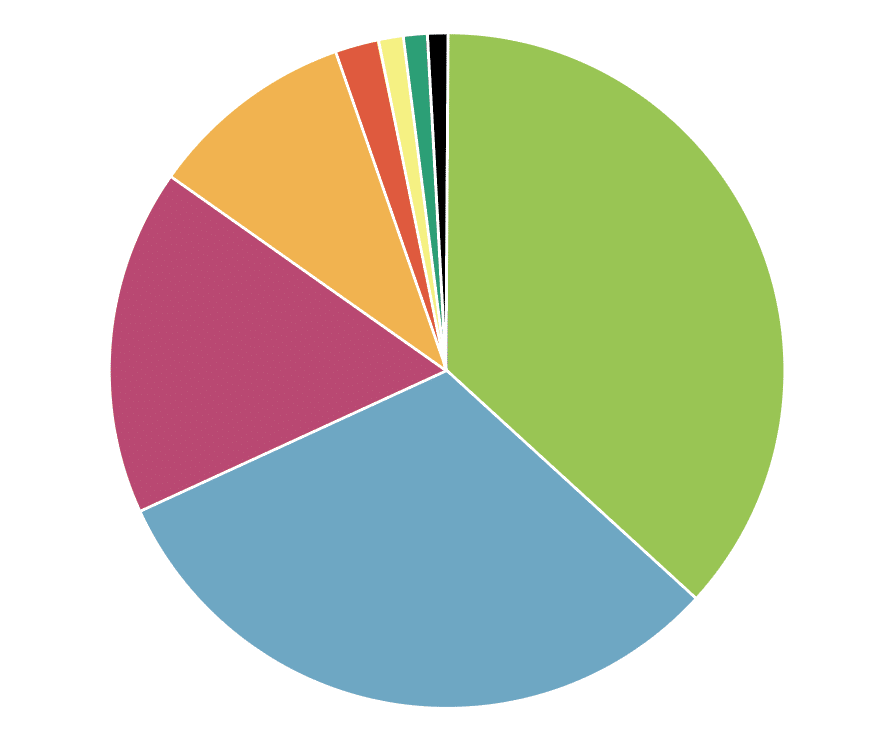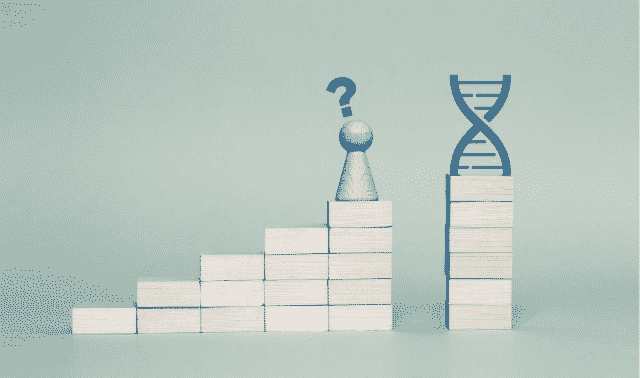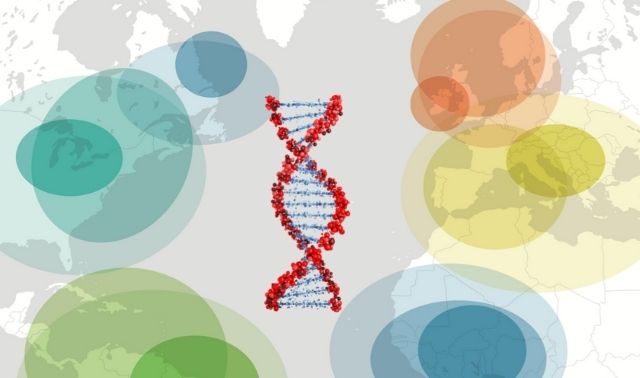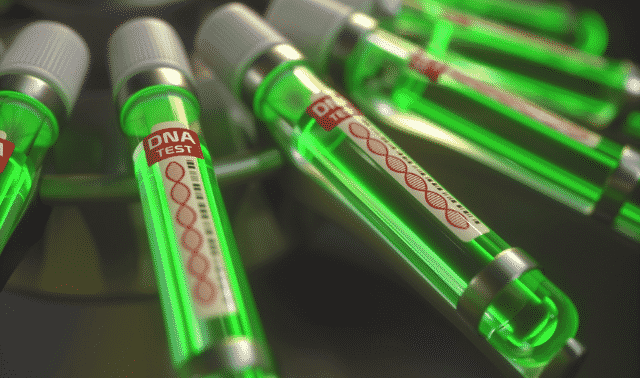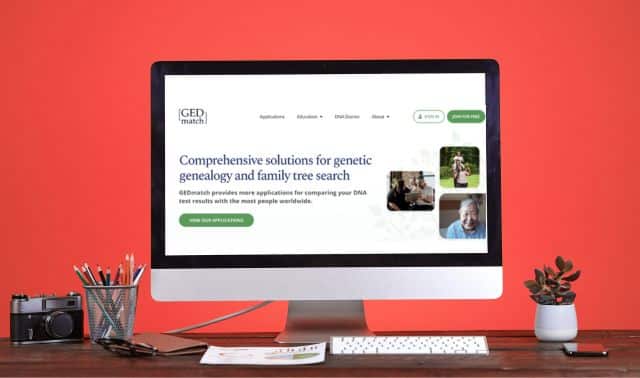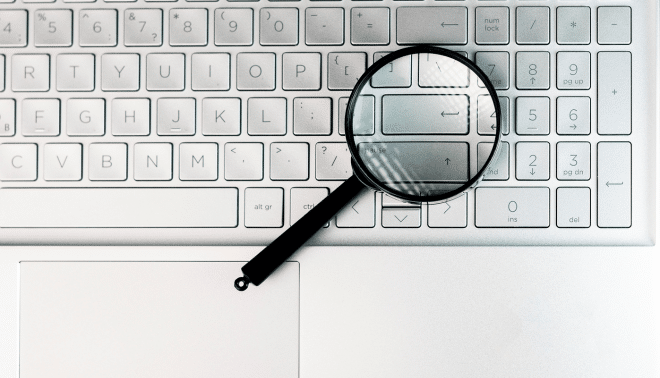
Q: What Can I Do with my Ethnicity Estimates?
A: I used to tell people that your ethnicity results were like a coffee table piece: pretty to look at, but not very useful.
But that has changed.
It has changed because our DNA testing companies have worked hard to expand their reference populations—the people they are comparing you against. That means that instead of breaking down your heritage into a few broad and general categories, some of companies can now break up the world into over a thousand different groups.
This means you can now turn to your ethnicity results for clues about your family history. In fact, whenever you are looking to break down a brick wall in the last five to six generations, I recommend reviewing your ethnicity results as a first step. In that review you are looking for anything that seems unfamiliar when compared to the rest of your known family history.
An obvious example would be noticing a Jewish percentage when you were previously unaware of a connection to that population. But you can look for even more subtle clues, like connections to Scandinavia or the Iberian peninsula.
We have to be careful, as there aren’t definite time stamps on our ethnicity results. So that means that connections to these large swaths of land may or may not have occurred in the last 300 years—but it is a start. At 23andMe, you can review your Ancestry Timeline to see how far back they estimate you should connect to a certain place. But at other companies, you are left to guesstimate.
Both 23andMe and AncestryDNA provide an extra layer to your ethnicity results that helps to define the locations of your ancestors in a more specific time frame. At 23andMe, you can find these more specific locations by just drilling down within each ethnicity category. For example, I am 42% British and Irish. If I click on that category I am taken to a second page reveals that I am not just British and Irish, but it is highly likely that I am from one of ten (of 165) specific regions in the United Kingdom, and it is only possible (so less likely) that I am from one of four (of 26) administrative regions in Ireland. The best part is, they expect my connection to be in the last 200 years.
AncestryDNA targets that same genealogical sweet spot of 200 years in their “Ancestral Journeys” (formerly “Migrations” and “Genetic Communities”). Based on a completely different (and more accurate) technology than the rest of the ethnicity results, many of these communities focus on migration patterns.
For example, there are hundreds of communities devoted to the United States, as well as settlers to New Zealand and Australia. There are nearly a hundred communities devoted to African Americans. Membership in one of these communities guarantees (yup, you read that right) you have an ancestor from that place. MyHeritage’s Genetic Groups give similar information.
All four major companies (Family Tree DNA, plus the aforementioned 23andMe, Ancestry DNA, and MyHeritage DNA) allow you to can compare your ethnicity results with those of your matches. This might be helpful if you are looking for a DNA match from a specific population group to help you fill in your missing ancestor. Just the other day, I was working with a client who had one Jewish line we were trying to place. So to help us narrow down the pool of matches we need to investigate, we looked for those who had Jewish ethnicity.
So what are you waiting for? Head out and take another look at those ethnicity results to see if maybe, just maybe, they might be just the clue you need to move forward in your research.
Last updated: May 2025.
Q: Which Company Has the Best Ethnicity Estimates?
A: First of all, there are three factors that affect the accuracy and usefulness of ethnicity estimates you receive from a testing company, no matter which one you choose. We’ll save the first two (fancy math and timing) for a later discussion. But the most relevant to your question are the reference populations—the people a company is comparing you against.
Reference populations
These reference populations are made up of regular people living today whose DNA can be used to represent the typical genetic makeup of a particular area. Each person in a reference population had grandparents who all lived within 60 miles of each other in a particular place. But if a testing company doesn’t have a reference population that reflects your ancestral makeup, your results won’t be able to provide detailed, accurate information on where your DNA is from.
For example, Family Tree DNA (as of this writing) doesn’t have an ethnicity category specifically for Ireland. So even if you’re 100-percent Irish, you won’t find the term “Irish” in your DNA test results. Rather, you’ll be in the “British Isles” category. That result might not surprise you, but someone with ancestry in Poland probably wouldn’t find “Broadly European” very helpful. That result is technically accurate, but it’s too broad to be interesting or useful.
So, to return to your question:
The best ethnicity estimates will come from the company that has your ancestral population(s) as a reference population.
Each of the major companies provides a complete list of their reference populations. So you can check that list to determine which company may be best for your particular mix of heritage.
DNA companies’ areas of specialty
All of the major companies are going to be good at providing a basic background for those of Western European descent. (Family Tree DNA is a decent baseline.) But some companies also excel in other areas of the world. Here’s a quick rundown of the major companies and their areas of expertise:
- 23andMe: Eastern European or South/Central American ancestry
- AncestryDNA: Ancestral Journeys tools help researchers determine where their ancestors were in the last 200 years, and what larger movements of people they may have been part of
- Living DNA: The United Kingdom, with subsets that provide more detailed results there (e.g., 12 percent Northumbershire, 6 percent Devon)
- MyHeritage DNA: Numerous unique populations: Jewish ancestry, Indigenous Amazonian, Inuit and more
No matter which company you choose, be prepared for changes and updates. Ethnicity estimates are an ongoing area of research.
For more on which test is best, check out Shannon Combs-Bennett’s article that shares her experiences with each of the “big five” services.
A version of this article appeared in the September 2019 issue of Family Tree Magazine.
Q: Why Do my DNA Ethnicity Results Keep Changing?
A: This is a question I get asked often. Implied within it is a statement: Ethnicity results shouldn’t change. But is that true?
It feels true because of the things we know about DNA and inheritance. After all, your DNA itself hasn’t changed from one update to the next. You aren’t suddenly more Italian than you were yesterday (even if you did each too much eggplant Parmesan last night). Last year, they said you were 25% Swedish. But now they’re saying you’re only 15% Swedish—with a splash of Danish thrown in. What’s going on?
The thing is, your ethnicity results should change. In fact, I’m going to go so far as to say you actually want them to change.
Why? Because that means our testing companies have gathered more data and refined their algorithms so they are better at calculating your ethnicity than they were before. Remember, these numbers are estimates—not hard facts. And those estimates change when new information enters the system.
Think of it like this: When trying to match a paint color, you’ll have a harder time with just three paint swatches than if you had 300. That’s exactly what’s happening with DNA testing: Companies like AncestryDNA and MyHeritage are constantly expanding their reference panels (their paint swatches, if you will) to give you more-accurate results.
In addition to changing methodology and algorithms, ethnicity estimates reflect a hard genetic reality: Regions don’t have DNA that’s as unique as we like to think. We expect that, when results say Scotland, only people from Scotland will show up in that category, and that every person from Scotland who takes a DNA test will show up in that category.
But that’s not the reality—humankind as just been too friendly over the last, say, 5,000 years. People from Ireland don’t look all that genetically different from those in Scotland or England or Wales. As a result, trying to tease out this one ethnicity from among the others is a very tricky business.
2020 AncestryDNA updates
For example, after a 2020 update, many AncestryDNA users found they had significantly more Scottish DNA than before. No one’s DNA changed—the methodology did. In previous iterations of AncestryDNA’s results, the company lumped all of the United Kingdom into one group, breaking out only Ireland.
But after the 2020 update, they had four reported groups: England & Northwestern Europe, Ireland, Scotland, and Wales. That “Scottish” DNA was there all along, masquerading as something else. (And, after the update, maybe your rightfully “English” DNA has been mislabeled as Scottish.)
2024/2025 AncestryDNA and MyHeritage DNA updates
Both AncestryDNA and MyHeritage DNA upped their ethnicity game since 2024. In July, AncestryDNA added 24 new regions:
- 8 in Africa (hello, Yorubaland and Western Bantu Peoples!)
- 5 in Europe (including Cornwall and Iceland)
- 3 in West Asia (including a new category for Sephardic Jews)
- 8 in South and Southeast Asia (from Gujarat to the Western Visayas)
Plus, they’ve created 54 European subregions. While these regions could still reflect your heritage thousands of years ago, they do home in much more precisely than your previous results. Learn more.
Early in 2025, MyHeritage made significant updates to its own ethnicity regions. “Ethnicity Estimate v.2.5”:
- Nearly doubled reported ethnicities from 42 to 79
- Can now tell the difference between Swedish, Norwegian and Danish ancestry (no more generic “Scandinavian”!)
- Totaled 15 different Jewish ethnicities (more than any other testing company)
- Created some unique ethnic categories you won’t find anywhere else, such as Armenian
MyHeritage lets you toggle between old and new results, and a fun spinning globe helps you visualize your results. Learn more.
Conclusion
If things will always be changing, what can our DNA tell us? Well, it can say with certainty that you have heritage from broader geographic regions, like Western Europe. And, as our testing gets more sensitive, we will be able to have increasing confidence in smaller geographic regions. While scientifically accurate, these connections might reach back thousands of years before anyone in your family started keeping records.
You might feel off-balance when you get updated ethnicity results or see a new ethnicity in them. Think of your DNA results like a family history layer cake. The top layer—the Genetic Communities (MyHeritage) and DNA Journeys (Ancestry)—are specific and connect you to recent generations, based on DNA patterns from the past few hundred years. That’s the good stuff. Those connections are typically spot-on and super valuable for research.
The bottom line? Your ethnicity estimates are like a high-tech family history hint: incredibly useful, but best used alongside traditional genealogy research and family stories.
So don’t panic if your new 15% Swedish estimate doesn’t match any Swedish ancestors in your family tree. You might need a time machine to find that connection!
Versions of this article appeared in the March/April 2022 and July/August 2025 issues of Family Tree Magazine.
Q: What Can I Do with Small Ethnicity Estimates?
A: “Trace” amounts of DNA—small percentages in your ethnicity estimates that are, say, less than 5%—can be tricky to interpret. Do you really have heritage from that place, or not? Learn more about these five things to better understand them:
1. Timelines
As discussed earlier, ethnicity estimates could span thousands of years back in time. That means you may indeed have unexpected ancestry from (for example) Africa, but it’s way back before any genealogical records were kept. Finding a name of an African ancestor would likely be out of the question.
2. How ethnicity estimates are calculated
As a reminder: Your DNA testing company is comparing your DNA to their panels of reference populations, then reporting back with an algorithm-generated estimate. They run the data over 1,000 times and get different numbers in each iteration. That leaves open many possibilities for variation.
AncestryDNA reports on the range of estimates when you click a location in your ethnicity estimate. According to Ancestry, my mom has 2% from Wales, with a range of 0 to 8%. That means some of the calculations resulted in no Welsh ancestry for my mom, while other iterations resulted in higher amounts (all the way up to 8%).
Another way of thinking about it: If your low ethnicity estimate has a range that doesn’t go all the way down to 0%, you can be more confident that the place will appear in your family tree if you go back far enough.
3. DNA inheritance patterns
Generally, you receive a known amount of DNA from each ancestor: You get half your DNA from your mom, and half your DNA for your dad. It seems logical, then, that you would have 25% from each of your four grandparents. However, that is almost never true—it’s never that cleanly delineated. You may have 20% from one grandparent, 30% from another, and so on.
But, if you stick to the averages, you can make inferences about what generation an ethnicity estimate comes from. You inherit roughly 12.5% of your DNA from each great-grandparent. As a result, you could reasonably expect that an ethnicity estimate of “12% Irish” comes either from one great-grandparent from Ireland, or from multiple, more-distant ancestors who each contributed a few percentage points to your total.
Using that same logic, an estimate of 3% Irish could come from a great-great-great-grandparent (at the very closest) who was from Ireland. Do any of your known ancestors fit that bill?
4. Y-DNA and mtDNA testing
Other types of DNA might reveal clues about your ethnicity estimate, particularly if you have an estimate for groups with DNA signatures such as Native Americans, Jewish populations or African Americans. Y-DNA (if the ancestor was along your strictly paternal line) or mtDNA (if the ancestor was along your strictly maternal line) could find your answer.
5. Genealogy research!
In the end, there really is only one way to determine if you small percentage is “real.” You have to do genealogy. Perhaps the ethnicity estimate has given you some insight into where to look for records, and that path leads you to the documentation of that ancestor. But until then, it’s just an estimate.
A version of this article appeared in the January/February 2024 issue of Family Tree Magazine.

